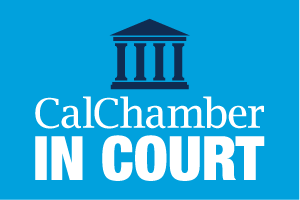Starting today, qualifying small businesses may apply for the federal loans offered through the Coronavirus Aid, Relief, and Economic Security (CARES) Act. In this episode of The Workplace podcast, CalChamber President and CEO Allan Zaremberg, and Golden Pacific Bank President and Chief Executive Officer Virginia Varela and Executive Vice President and Chief Business Officer Joseph P. McClure discuss what small business loan programs are available through the CARES Act and how business owners can determine which program best meets their needs.
This podcast was recorded on April 2. Listeners should be aware that given the unpredictability of the COVID-19 crisis, the federal government may alter its relief programs at any time. Information presented in this podcast is accurate as of April 2.
Below is a condensed summary of today’s podcast. To hear the full discussion of each topic, visit the time stamps noted in the article below.
Available Loans
Time discussed: 01:40
Varela kicks off the podcast by informing listeners that there are several programs through the CARES Act that businesses should know about.
One important program she highlights is a debt relief program available to businesses with fewer than 500 employees impacted by the COVID-19 crisis that have an existing 7(a) business loan through the U.S. Small Business Administration (SBA). The program pays for a business’ interest and principal payments for a six month period, beginning with April 1’s payment.
The two loan programs available to small businesses that Zaremberg, Varela and McClure go on to discuss are:
- The Paycheck Protection Program; and
- The Economic Injury Disaster Loan Assistance Program.
Paycheck Protection Program
Time discussed: 04:05
Paycheck Protection Program (PPP) loans are processed by participating banks and lenders, and are not SBA loans, McClure says.
The program provides a loan to cover payroll costs and other eligible expenses over an eight-week period (for a list of eligible expenses, click here). The exact loan amount granted is determined by a business’ average monthly payroll costs over the last 12 months, McClure explains. Payroll costs are capped at $100,000 on an annualized basis for each employee.
If the business can provide documentation at the end of the eight weeks to prove that the loan was used to cover eligible expenses, the loan is forgiven and paid by the SBA. If, however, any portion of the loan was used to cover other expenses not eligible under the terms of the program, the business will be responsible for the noncovered portion in a two-year loan, at 1% interest, McClure tells Zaremberg.
To be eligible, businesses must have fewer than 500 employees. Exceptions have been made for businesses in the food and accommodation industry. For restaurants and hotels, the business must have fewer than 500 employees per location, McClure says.
To apply for a PPP loan, business owners must download the application (available at the U.S. Department of the Treasury website), and submit it to a participating bank, McClure says. Varela points out that not all banks and lenders are working with the SBA to offer PPP loans.
When applying, business owners will need to submit proof documentation of payroll costs before a bank processes the loan and when seeking loan forgiveness at the end of the eight-week period, Varela says.
McClure cautions that there are stipulations if a business lowers pay or lays off workers while participating in the program. Doing so may decrease the loan amount that can be forgiven. Moreover, businesses that have laid off workers or cut salaries may have to rehire or reinstate salaries to meet PPP eligibility requirements.
The program is purposely designed to help businesses retain their workforce, Zaremberg notes.
“You may look at your daily revenues and say ‘I can’t afford to hire these people back,’ but that’s exactly what the purpose of this loan and forgiveness program is. So that the business will hire them, even if they don’t have revenues coming in the door,” Zaremberg says.
Varela agrees. “It’s a job protection program in a lot of ways too,” she says.
McClure recommends those interested in the PPP visit the U.S. Treasury Department website, where there are FAQs available for both lenders and borrowers.
Economic Injury Disaster Loan Assistance Program
Time discussed: 22:15
Unlike PPP loans, loans under the Economic Injury Disaster Loan (EIDL) Assistance Program are funded by the SBA and will need to be paid back. In general, loans under the program provide up to $2 million over a 30-year term at a 3.75% interest rate. Repayment starts 12 months from the disbursement date, Varela explains.
To qualify, businesses must have fewer than 500 employees.
While EIDL loans need to be paid back, Varela says that the program contains certain provisions that may be a better fit for some businesses in the long term. Not only is there a 12-month reprieve, but also certain requirements are waived and interest rates are clear, helping businesses make strategic plans, she says.
Moreover, Zaremberg adds, the loans don’t contain restrictions on how the borrowed money should be spent.
Businesses may apply for both the PPP and EIDL so long as a business doesn’t “double dip,” McClure says. For example, a business cannot use an EIDL loan to pay for payroll expenses and also use a PPP loan to pay for payroll expenses. Business can, however, use a PPP loan to pay its workforce, and use an EIDL loan to cover businesses losses not covered under the PPP, he explains.
Small businesses may begin applying for both the PPP and EIDL today, at https://www.sba.gov/funding-programs/loans/coronavirus-relief-options.
A resource page with a list of relevant COVID-19 articles and links to government resources is available on the CalChamber website, www.calchamber.com/coronavirus. The page is regularly updated to ensure readers are accessing the most current information available.

